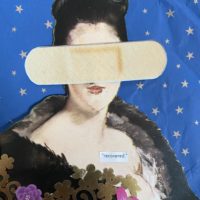I joked with a writer friend recently that I have one mental health essay, one dying grandma essay, and maybe two running essays left in me. Some of this is because I want to diversify, but if I’m being honest with myself, a lot of it is because I don’t want to be annoying.
For much of my essay writing, I abide by dinner party rules. Limited repetition. Enough context for the people who don’t know you well to get it but not so much that you bore those who do. And, you have to earn your spot. If you’re going to spend a lot of time talking about yourself, you need to be interesting; funny, if you’re sure you can get the laugh; strong in your perspective; and open to an audience. What is an essay if not an extended bit?
I’ve learned that people have a hard time looking at prolonged grief and struggle with no happy ending. Even close friends ask question after question to find a good thing I can’t give them. And I don’t talk about running, mostly, except with other runners because it is canonically annoying. (How do you know if someone has run a marathon? Don’t worry, they’ll tell you!) But as difficult as my relationships with my family and running can be, I still love them. At the heart of the story is that love. And love can be annoying, sure, but it doesn’t bother me to be known by it. It’s okay if I’m a little annoying in my earnestness.
But “the mental health thing” feels more pervasive. It wasn’t until a few years ago that I realized I had an actual problem, and even more recently how serious it was. It touched everything: how I thought, how I behaved, how I slept and ate, the decisions I made, how I treated people. I’d been writing about it for years and hadn’t noticed (but if I remember correctly, the comment section had).
I’ve always felt there was a gap between the person I think I am and the person I actually am. I love running marathons—see? annoying!—but I get obsessive in a way that has hurt me. I love my friends but I worry all the time that I’ve done something weird or wrong or that they don’t care about me. I fixate on things I know don’t matter, and sometimes aren’t real. I try to be brave but I’m scared all the time. That’s not an exaggeration. I am scared all the time. And, the better my life is, and the happier I feel I should be, the worse I feel about myself.
This has always been true. Since I was very young, I could tell when I was hard to be around, when I was acting in a way that didn’t make sense even to me and I couldn’t explain it. Even without a conclusive diagnosis, I could name the gap. Looking back on my life, on my work, it’s clear that I was never not trying to find a thing to make me feel better, to chart the edges of the chasm. To find a bridge.
Since I have become a Publicly Depressed Person, people do want to talk to me about mental health at dinner parties. I feel like I always disappoint them: If they want the ugly, sordid details, I won’t give them up, and if they want the solution, I can’t share it because I don’t have it. All I know is what I know, and they’ve already read about it. But I do my best to hold up the template of what has worked for me. My version of health, with its long runs—again, annoying!—and regimented structures and excessive alone time, is not what everyone wants for their lives. It can take a lot of work to be only-kind-of-okay. Sometimes I don’t know if it’s what I want for my life, either, but it’s what I have.
Still, I look for bridges across the gap, or I build them. I seek out other people doing the same, the blueprints they’ve made or the maps they’ve charted for safer crossing. I’ll keep reading about it and writing about it and hard-committing to the bit because it is also love. It is who I am. It’s how I get through.
I had the privilege of reading over a hundred essays on the difficult work getting through the day-to-day for this special issue during Mental Health Awareness Month. Each one felt like hope. I am astounded by the generosity of every writer who submitted, and I hope these pieces we’ve selected can help others find their own way.
You’ll be able to recognize the pieces in this special issue by their common featured image, created by artist Honey Gilmore. We hope you’ll follow along this month and share the work on Twitter, Instagram, and Facebook.



